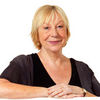Sydney property recovery is far from over
By Pam Walkley
Recovery or boom?
The growth in Sydney house prices has become a national talking point.
And now the Reserve Bank of Australia (RBA) has put its oar in the water with the governor, Glenn Stevens, saying that low interest rates aimed at boosting business investment and employment are in danger of creating a housing bubble.
The RBA is especially concerned about the rise in loans to investors, which now account for about 40% of all home loans, and has foreshadowed new regulations to curb some of the investor froth before the end of the year.
But a number of respected real estate analysts say the recent price rises in Sydney are little more than a recovery from a long period of weakness.
Louis Christopher, of SQM Research, says Sydney house prices have risen only 3.5% a year for the past 10 years. Hardly a bubble waiting to burst! Veteran property expert and LJ Hooker chairman Greg Paramour agrees with SQM's figure of 3.5% growth a year for the past decade.
He says there are indications, such as less property coming onto the market, that the heat is already evaporating and he fears any artificial tampering with the market could put a dampener on first-home buyers, as happened in New Zealand when valuation ratios (the percentage of the value borrowed) were restricted.
Analysts such as Christopher say the recovery is far from over.
He expects Sydney prices to rise between 8% and 12% in the year to June 2015 if interest rates remain unchanged, the economy remains steady and the Aussie dollar continues to be above US85 cents.
Of course, RBA action to curb investor buying may also affect this prediction. Other cities can expect slower growth, predicts Christopher, with Melbourne coming in second at 5%-9%, Brisbane and Adelaide next at 5%-8%, followed by Hobart (3%-6%), Perth (1%-4%), Canberra (-2% to 3%) and Darwin (-3% to 1%).
Certainly investors should tread carefully in Sydney and, to a lesser extent Melbourne, ahead of any RBA action.
And while the RBA assures it's not about killing the investor market, it plans to address the imbalances with "carefully targeted tools", assistant governor Malcolm Edey told a Senate committee in early October.
What these will be is shrouded in secrecy. Perhaps the RBA is hoping its threat of regulation will help solve the problem.
Another obstacle that investors may have to face comes from increased calls for the government to end negative gearing for new investors.
Saul Eslake, chief economist of Bank of America Merrill Lynch, says that negative gearing should be stopped to new investors because it was contributing to the growth of property prices. The Grattan Institute says it costs the government $2.4 billion a year and leads investors to bid up prices, locking out first-home buyers.
Money's Paul Clitheroe is also calling for the removal or weakening of the over-generous tax breaks that real estate investors receive.
The RBA's Edey conceded that negative gearing might be contributing to the problem but he said this had been in place for a long time and was not something that had triggered the recent bout of activity.
Given all the threats investors are facing, now might be the best time for those looking for a loan to jump into the market. But, of course, this would push up prices, meaning if the RBA's strategy is to talk down the market it will fail.
Get stories like this in our newsletters.



